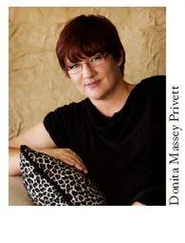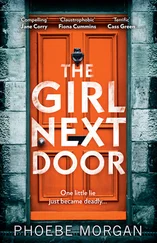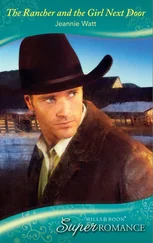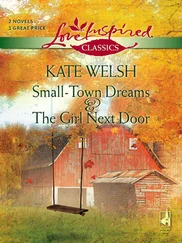CHAPTER TWO
IT IS A fantasy many have, a kind of dream, a place to think of to send one to sleep. It begins with a door in a wall. The door opens, confidently pushed open because what is on the other side is known to the dreamer. They have been there before. They have seen somewhere like it, somewhere real, but less beautiful, less green, with less glistening water, fewer varied leaves, and where the magic was missing. The secret garden is always the same: perfect, the plants in flower, the sun always shining, a single bird singing, a single dragonfly in flight. The dreamer never leaves the secret garden. The garden leaves the dreamer, replacing it with that sense of loss that is sadness and hope departed, perhaps the first they will ever have.
Their garden was not beautiful. It had no flowering trees, no roses, no perfumed herbs. Tunnels, they called it at first. The word ‘qanat’, an impossible word, was found by Daphne Jones and adopted by the rest of them. It meant, apparently, a subterranean passage for carrying water, in some oriental language.They liked it because it started with a q without a u. Their schoolteachers had taught them that no word could ever start with q unless followed by u, so Daphne’s idea appealed to them and the tunnels became qanats. In time to come the qanats became their secret garden. They were Daphne, of course, Michael Winwood, Alan Norris, Rosemary Wharton, Lewis Newman, Bill Johnson and all the Batchelors, Robert, George, Stanley, Moira and Norman, and the rest. They discovered the qanats in June in the last year of the Second World War, tunnels that were secret gardens to them or to those of them who had dreams and imagination. They never said a word about them to their parents, and in those days few if any parents asked their children where they went in the evenings, telling them to come home only if the air-raid sirens sounded.
It was not countryside where the qanats were. Building had begun on these fields before the war started and stopped when the first sirens sounded. They were on the edge of Essex, an outer suburb of London on the borders of Epping Forest. Green meadows still remained, divided by tall, thick hedges composed of many varieties of trees, uncut, seldom even trimmed: squat oaks two hundred years old, screens of elms flourishing before Dutch elm disease was heard of, blackthorns and hawthorns creamy-white in spring, crab apples with pink-tinted blossom. In the fields where hay was no longer cut grew yellow ragwort and blue speedwell and red campion and bee orchids. Painted Ladies and Red Admirals and Peacocks deserted the wild flowers and made for the buddleia in the gardens of the houses of The Hill and Shelley Grove, and dusk brought out the Red Underwing and the Lime Hawk moths. The children thought the fields would always be there, they knew nothing of change. They played in the grass and the hedges, running home to Tycehurst Hill and Brook Road when the sirens set up their howling. Bombs dropped, but not here, not on Loughton, only one in the whole war. One day, when no siren had gone off for a week, a group of them, several of the Batchelors and Alan and Lewis, came upon a cave, a hole in the ground that looked like the entrance to a tunnel.
It was June 1944. School hadn’t broken up for the summer holidays and wouldn’t for another month. It finished at 3.30 in the afternoon and everyone had come home. The Batchelors, Robert and George and Stanley and Moira – Norman was recovering from chickenpox – all went out into the fields and Stanley took Nipper on the lead. Alan and Lewis and Bill were already out there, sitting up in the hollow oak, in the broad circular space where someone a hundred years ago must have chopped off the top of the tree and a dozen branches had grown up around it. In summer when it rained you could sit in there and not get wet, protected by a canopy of leaves. It had been raining that day but was no longer, so Alan and Lewis came down and joined the others in their wandering up the slope on the other side towards The Hill. Would they ever have found the qanats if Moira hadn’t spotted a rabbit dive into the hole? Not one of the boys would even have noticed it, not even Stanley the animal lover, not even Nipper, who had seen the Joneses’ dog on the pavement outside the Joneses’ house and begun plunging about on his lead, barking and growling. Stanley had to stay outside while the others went into the hole. Someone had to hold on to the dog. The Joneses’ dog was making such a racket that Daphne came out to grab it and drag it back into the house.
There were steps inside the hole, muddy and rain-soaked, cut out of the clay. Who had cut those steps? Who had made this place? They didn’t know A passage led along under the field, under the grass and the wild flowers and through the tree roots. It was dark, but not so dark you couldn’t see each other or the tarpaulin roof, though you could tell you’d need candles in the night-time. The walls were just earth, but earth composed of ginger-coloured clay, the kind of clay their fathers complained about when they had to dig the garden. The six of them, for Daphne Jones had joined them, saying Stanley had told her where they were, emerged into a wide round area like a room that other passages led into. It was no secret garden, but it had certain secret garden qualities. It was quiet. It would have been silent apart from the noise they made. It was still and welcoming. It was dark until you lit it.
‘We could come in here,’ George said. ‘We could bring food and stuff. It’d be good if it was raining.’
‘It’d be good anyway,’ said Alan.
‘I’m going to explore,’ said Moira, and they all went with her, discovering what passages there were and how deserted it was, as if no one had ever been there but to dig it out, dig steps down to it where they had come in, cover it up with tarpaulins, then had just gone away and abandoned it to the rabbits and the squirrels.
‘Qanats,’ said Daphne Jones, and qanats they became.
As you get older, you forget names: those you studied with, worked with, lived next door to, the people who came to your wedding, your doctor, your accountant and those who have cleaned your house. Of these people’s names you forget perhaps half, perhaps three quarters. Then whose names do you never forget, because they are incised on the rock of your memory? Your lovers (unless you have been promiscuous and there are too many) and the children you went to your first school with. You remember their names unless senility steps in to scrape them off the rock face. Alan Norris had not had enough lovers to forget the names of those he had had, and his wife had had none. This was a subject they never discussed. Nor did they think about those people they had been to their first school with, but they remembered their names. They had also been in those tunnels that they gave a peculiar name to, but they had no reason to think about it until it was all over the papers.
‘Qanats,’ said Alan, who something over fifty years ago had married if not the girl next door, the girl in the next street.
Rosemary said she had always disliked that name, even when she was only ten. ‘Why not tunnels? That’s what they were, after all.’
The Daily Telegraph spread out on the dining table, Alan was reading about a discovery made by three Polish builders under a house called Warlock, on The Hill. Reading about it and looking at a picture of what they had found, a biscuit tin and its contents.
‘What a name,’ said Rosemary, reading it over his shoulder. ‘Zbigniew. Is that how you pronounce it?’
‘No idea.’
‘That’s the one who dug it out. They were putting in a basement, it says. That’s the last thing we want in Loughton, basements. Those things are hands, are they? Just bones by this time, thank goodness. They’ll never finish doing that basement now.’
Читать дальше












